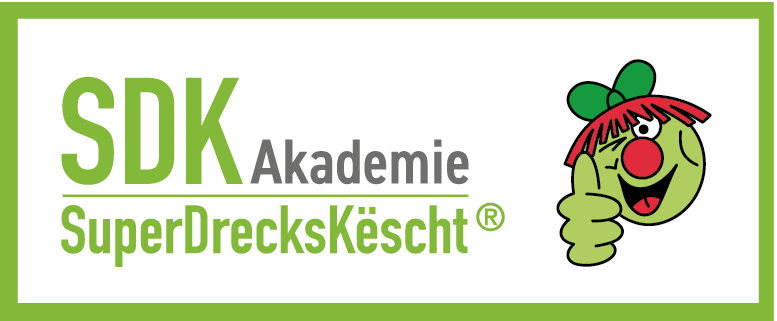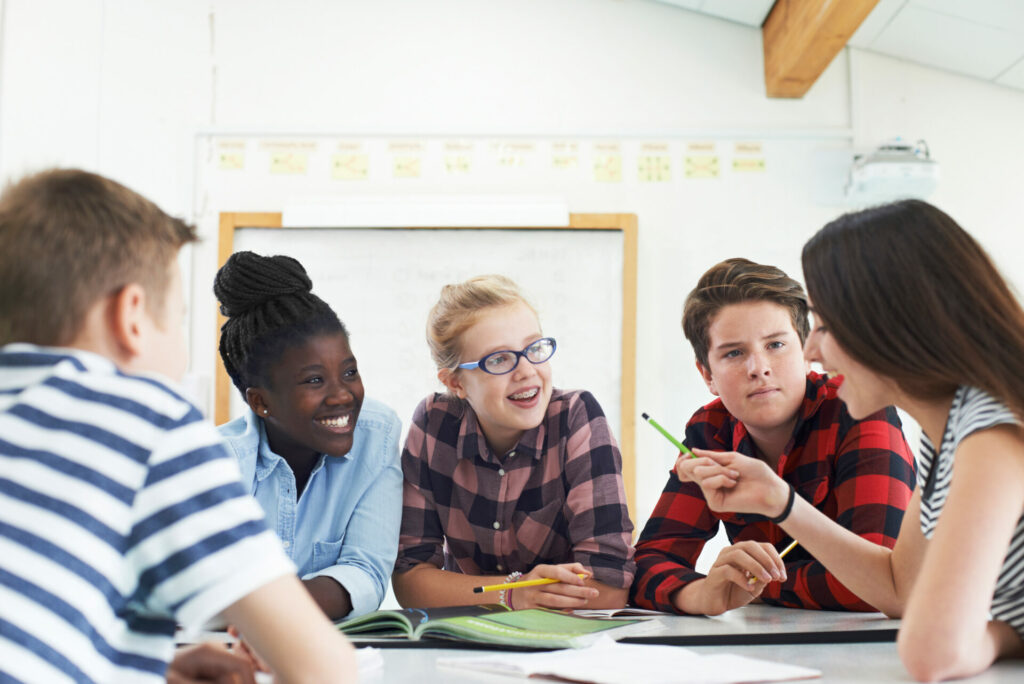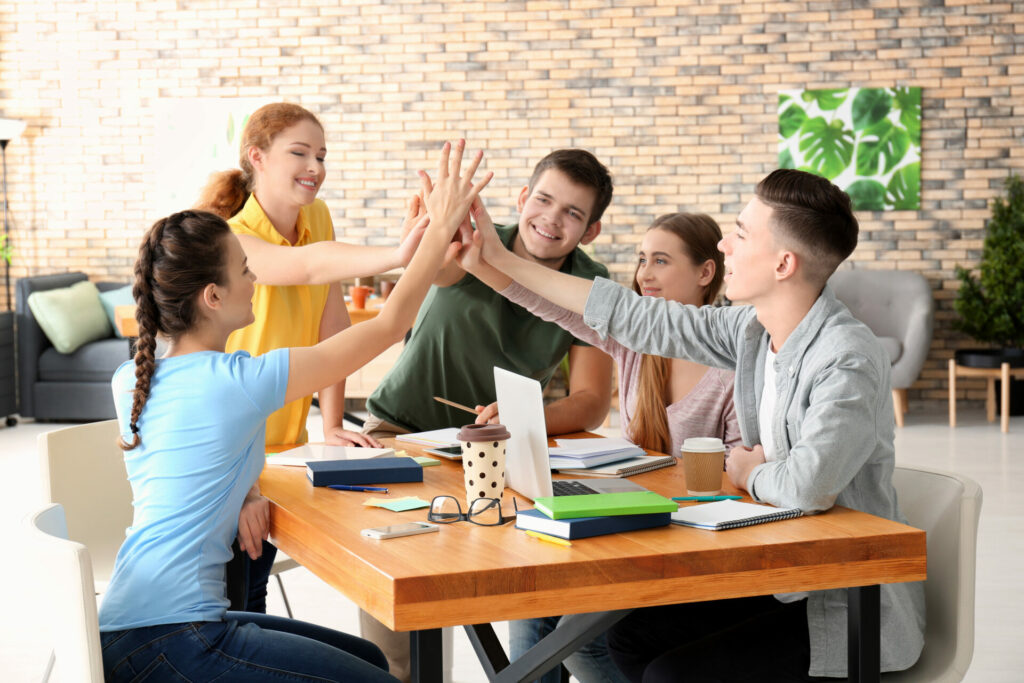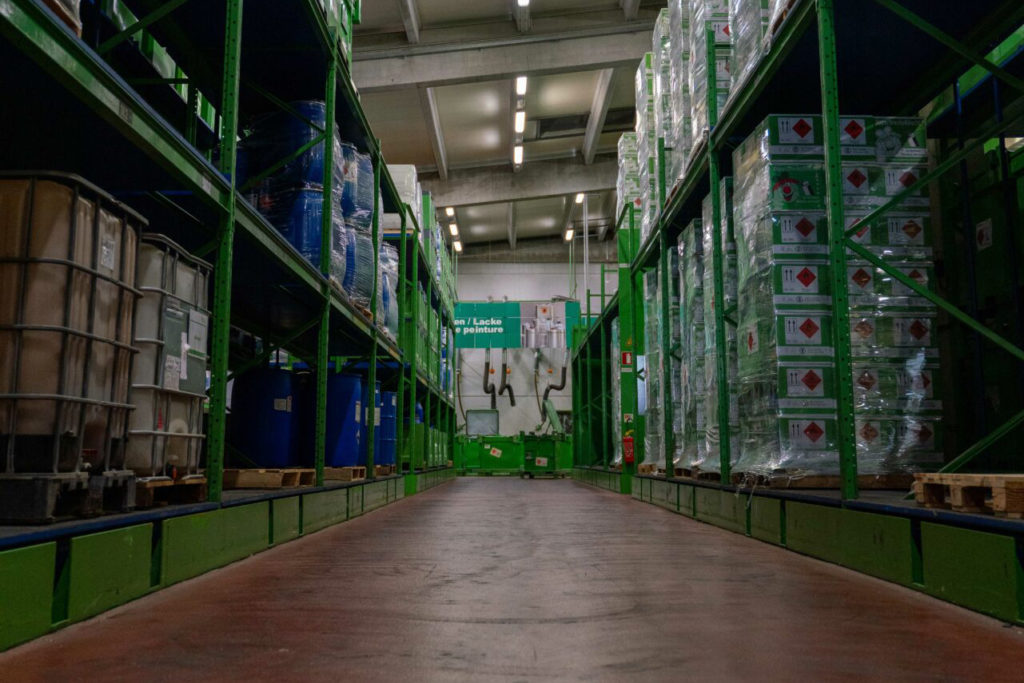

Activities
Target group: 7e to 5e
Participants: maximum 30 pupils
Duration: 1 x 2 lessons
Objectives:
The pupils:
• understand why natural resources are becoming increasingly scarce and why this is important for all of us.
• develop a critical awareness of the sustainable use of resources and thus become reflective consumers.
• learn how to separate recyclable materials by type to support recycling.
• realise that their own actions help to close material cycles and thus protect the environment.
Short description:
Resource consumption and resource conservation affect our lives every day. To kick off the activity, pupils playfully experience the challenges of resource scarcity and the linear economy. They learn about alternative models such as the waste pyramid and material cycles.
In interactive groups, they work their way through the recycling process of everyday waste products and discuss practical alternatives – always with a view to the question: How much influence do we actually have as consumers?
Target group: 7e to 5e
Participants:: maximum 30 pupils
Duration: 1 x 2 lessons
Objectives:
The pupils:
• take a close look at the environmental and social problems caused by the production of smartphones.
• develop creative solutions for a more sustainable use of their devices.
• critically scrutinise their own smartphone use and reflect on their habits.
Short description:
How does my smartphone affect me – and what price does the environment pay for it? In this activity, pupils dive straight into the history of how modern mobile phones are made. They disassemble an old and a new smartphone to understand the consumption of resources and the often invisible consequences of raw material extraction. They then take a critical look at their own usage habits and discover how a more conscious use of smartphones can be more sustainable.
Target group: 4e to 1ère
Participants: maximum 30 pupils
Duration: 1 x 2 lessons
Objectives:
The pupils:
• discover the diversity and background of the textile industry and understand how multifaceted this sector is.
• follow the life cycle of different types of textiles from production to disposal.
• develop creative approaches for the responsible use of textiles.
Short description:
In the introductory round, the pupils gain exciting insights into the complex world of the textile industry and immerse themselves in the often hidden challenges of fashion production. They learn about the ‘pyramid of sustainable consumption’ and develop practical ideas for a more sustainable use of their clothing. A subsequent discussion about extreme lifestyles encourages them to reflect on their own consumption – and inspires a more conscious approach to fashion.
Target group: 4e to 1ère
Participants: maximum 30 pupils
Duration: 1 x 2 lessons
Objectives:
The pupils:
• take a look behind the scenes and follow the entire life cycle of a smartphone.
• familiarise themselves with the key principles of sustainability.
• reflect on the far-reaching effects of a smartphone over its entire life cycle.
• develop a critical awareness of sustainable approaches to dealing with smartphones.
Short description:
Almost everyone has one – but who thinks about the environment or social consequences when buying a smartphone? In this activity, pupils are made aware of what lies behind the shiny facade of modern mobile phones. They discover the complex life journey of a smartphone and learn how much its ‘life chain’ affects the environment, society and the economy. Through interactive discussions, they explore what sustainable behaviour can look like in their everyday lives and how they can exert real influence as consumers.
Target group: 4e to 1ère
Participants: maximum 30 pupils
Duration: 1 x 2 lessons
Objectives:
The pupils:
• understand the consequences of the increasing scarcity of resources.
• recognise sustainable development as an indispensable way of conserving natural resources.
• develop ideas for sustainable action alternatives – both individually and at a political level.
Short description:
What does sustainability really mean? And how can it be that we consume resources as if they were needed for ‘1.5 planets’? These and other questions are at the centre of this activity. The pupils discover the concepts of the ecological footprint and Earth Overshoot Day. They take a close look at their own resource consumption and develop creative solutions for a more sustainable way of life – from personal changes to ideas for political measures.

Coaching
Objectives:
The coaching is intended to give pupils and teachers the opportunity to actively and concretely change their school in the direction of sustainability. This makes sustainable action tangible and easier to implement for the entire school community.
Short description:
This coaching programme is aimed at committed student groups (such as student committees) and teacher teams who want to make their school more resource-efficient and sustainable. Whether waste avoidance, education about correct waste separation or sustainable school events – the ideas for implementation come directly from the participants. The SDK Akademie provides advice and the necessary expertise to successfully implement creative ideas. Each school receives customised coaching that is specifically tailored to its needs and goals.

Visits
You teach at a secondary school and would like to clarify exciting questions with your class: What exactly does the SuperDrecksKëscht® do? What happens to hazardous waste? Why is the collection of waste so important?
Then visit the SuperDrecksKëscht® logistics centre in Colmar-Berg! Simply register by email or phone and discover with your class what the SDK’s main mission is and how everyone can contribute to protecting nature’s resources.








